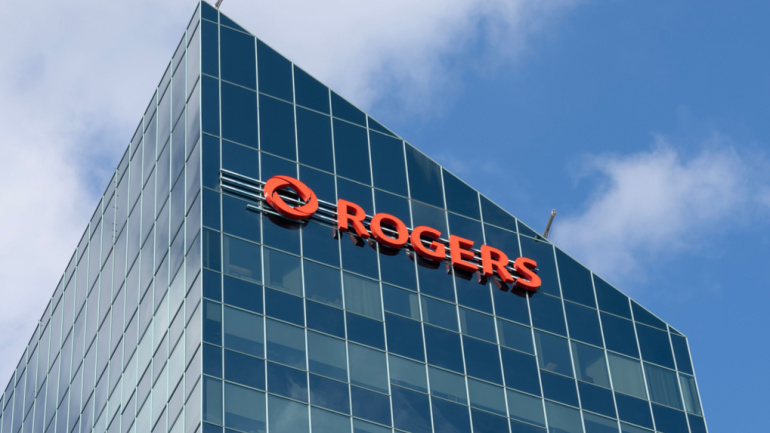Rogers Communications’ initiation of Ericsson’s 5G Advanced technology in Canada sets a new standard for telecommunications, focusing on enhancing network efficiency and IoT connectivity. This advanced technology optimizes wearables, sensors, and essential services for emergency responders.
Rogers Communications has secured a CAD $7 billion equity investment from a Blackstone-led group, gaining capital to reduce debt and strengthen its balance sheet. The deal grants Blackstone a 49.9% stake in a Rogers subsidiary managing wireless infrastructure, while Rogers retains control—marking a strategic move post-Shaw acquisition.
Rogers Communications has partnered with Ericsson to test groundbreaking 5G Cloud RAN technology, marking its first deployment at a live event during a Toronto Blue Jays game. This advancement builds upon Rogers’ national 5G SA core network, enhancing technological capabilities, network reliability, and energy efficiency.
Navigating controversy and complex negotiations, Rogers Communications’ acquisition of Shaw Communications, perhaps unexpectedly, resulted in significant job cuts. Amidst skepticism and fears of further layoffs, Rogers remains steadfast in their stance, insisting on their commitment to job creation. However, the telecommunications landscape is a convoluted jigsaw, and this merger has merely revealed another challenging piece.
Rogers Communications Inc. has announced plans to offer full 5G connections to Toronto’s subway system, including 911 access for all users. The telecom corporation has agreed to buy BAI Canada. BAI has had exclusive rights to establish the Toronto Transit Commission wireless network since 2012. Rogers will now be able to make the investments needed to develop a comprehensive and reliable 5G network for the entire TTC subway system as a result of this transaction. 5G network construction is projected to take about two years. Rogers will collaborate with the TTC on a phased deployment strategy, including network design, architecture, and rollout logistics, for both network enhancements and growth in stations, concourses, and all subway tunnels. Extensive fiber network and radio equipment improvements are required to update the network and boost the cellular capacity of the present 3G and 4G networks. In addition, they are required to improve service…
A historic milestone for the Canadian telecommunications sector was realized as Rogers Communications Inc. announced it had successfully concluded its merger with Shaw Communications Inc. The merger unites two famous Canadian companies that have been connecting Canadians for over five decades. The merger creates a coast-to-coast nationwide company which has fiber-powered internet that is accessible to nearly 70% of Canadian households. The newly combined company plans to bundle more products and services, including internet, television, phone, smart home monitoring, wireless services, credit card offers and sports and media content. In the next five years, the company intends to spend billions of dollars to offer fast, reliable networks in additional towns across Western Canada. Rogers will invest $1 billion in the four Western provinces to link rural, remote and Indigenous communities, as well as unserved distant routes. The business also intends to invest $2.5 billion to expand and strengthen…
Canada’s merger court has ruled in favor of Rogers Communications and Shaw Communications in a major antitrust case, removing one of the final barriers to the merger of two of the country’s largest telecommunications companies. The decision follows a month-long hearing that included evidence from 45 witnesses and thousands of pages of documentation. The merger of Rogers and Shaw has been in the works for almost two years and was always expected to face scrutiny from competition authorities. One key concern was the consolidation of the Canadian mobile sector through Rogers’ acquisition of Shaw’s Freedom Mobile. To address this, the companies pledged to sell Freedom Mobile to the smaller mobile network operator, Videotron. After considering this concession, the Canadian Competition Tribunal ruled that the acquisition could proceed, provided that Shaw first completes the disposition of Freedom Mobile. The Competition Bureau had requested that the tribunal block the merger…
A multibillion-dollar merger between Shaw Communications and Rogers Communications Inc., two of the biggest telecommunications businesses in Canada, was officially rejected by the federal industry minister. “Today, I officially denied that request. My decision formally closes that chapter of the original proposed transaction,” said Canadian Industry Minister Francois-Philippe Champagne. The US$19 billion merger between the two businesses was revealed in March, but it was met with opposition because it may limit consumer choice and drive up mobile costs. Shaw’s wireless spectrum licenses would have been completely transferred to Rogers as a result of the acquisition. Shaw’s ownership of Freedom Mobile has been largely viewed as the biggest impediment to the deal’s ratification. Videotron, located in Montreal, agreed to purchase it for $2.1 billion earlier this year. Champagne stated that he wanted two specific commitments before approving the Videotron merger. Videotron would have to agree to maintain the…
Ericsson unveils the Indoor Fusion 8828, a cutting-edge 5G solution engineered for enhanced indoor wireless connectivity. This innovation, first adopted by Bell, integrates radio and baseband in a single unit, supporting high-speed 5G coverage in small venues.
Congress is tackling the challenge of replacing Chinese telecommunications equipment in U.S. networks by funding the “rip and replace” initiative. This boosts efforts to remove potential threats and secure rural telecommunications connections.













